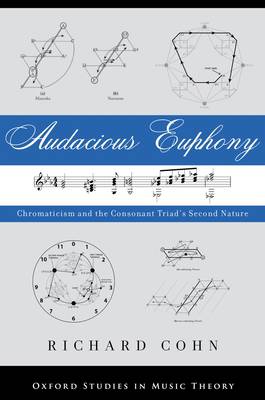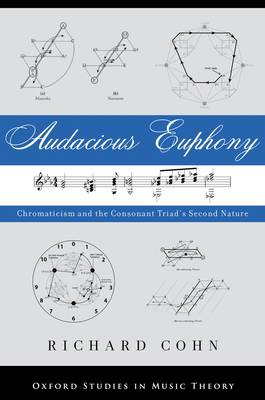
- Afhalen na 1 uur in een winkel met voorraad
- Gratis thuislevering in België vanaf € 30
- Ruim aanbod met 7 miljoen producten
- Afhalen na 1 uur in een winkel met voorraad
- Gratis thuislevering in België vanaf € 30
- Ruim aanbod met 7 miljoen producten
Zoeken
€ 135,45
+ 270 punten
Omschrijving
Music theorists have long believed that 19th-century triadic progressions idiomatically extend the diatonic syntax of 18th-century classical tonality, and have accordingly unified the two repertories under a single mode of representation. Post-structuralist musicologists have challenged this belief, advancing the view that many romantic triadic progressions exceed the reach of classical syntax and are mobilized as the result of a transgressive, anti-syntactic impulse. In Audacious Euphony, author Richard Cohn takes both of these views to task, arguing that romantic harmony operates under syntactic principles distinct from those that underlie classical tonality, but no less susceptible to systematic definition. Charting this alternative triadic syntax, Cohn reconceives what consonant triads are, and how they relate to one another. In doing so, he shows that major and minor triads have two distinct natures: one based on their acoustic properties, and the other on their ability to voice-lead smoothly to each other in the chromatic universe. Whereas their acoustic nature underlies the diatonic tonality of the classical tradition, their voice-leading properties are optimized by the pan-triadic progressions characteristic of the 19th century. Audacious Euphony develops a set of inter-related maps that organize intuitions about triadic proximity as seen through the lens of voice-leading proximity, using various geometries related to the 19th-century Tonnetz. This model leads to cogent analyses both of particular compositions and of historical trends across the long nineteenth century. Essential reading for music theorists, Audacious Euphony is also a valuable resource for music historians, performers and composers.
Specificaties
Betrokkenen
- Auteur(s):
- Uitgeverij:
Inhoud
- Aantal bladzijden:
- 256
- Taal:
- Engels
- Reeks:
Eigenschappen
- Productcode (EAN):
- 9780199772698
- Verschijningsdatum:
- 23/01/2012
- Uitvoering:
- Hardcover
- Formaat:
- Genaaid
- Afmetingen:
- 236 mm x 163 mm
- Gewicht:
- 521 g

Alleen bij Standaard Boekhandel
+ 270 punten op je klantenkaart van Standaard Boekhandel
Beoordelingen
We publiceren alleen reviews die voldoen aan de voorwaarden voor reviews. Bekijk onze voorwaarden voor reviews.











